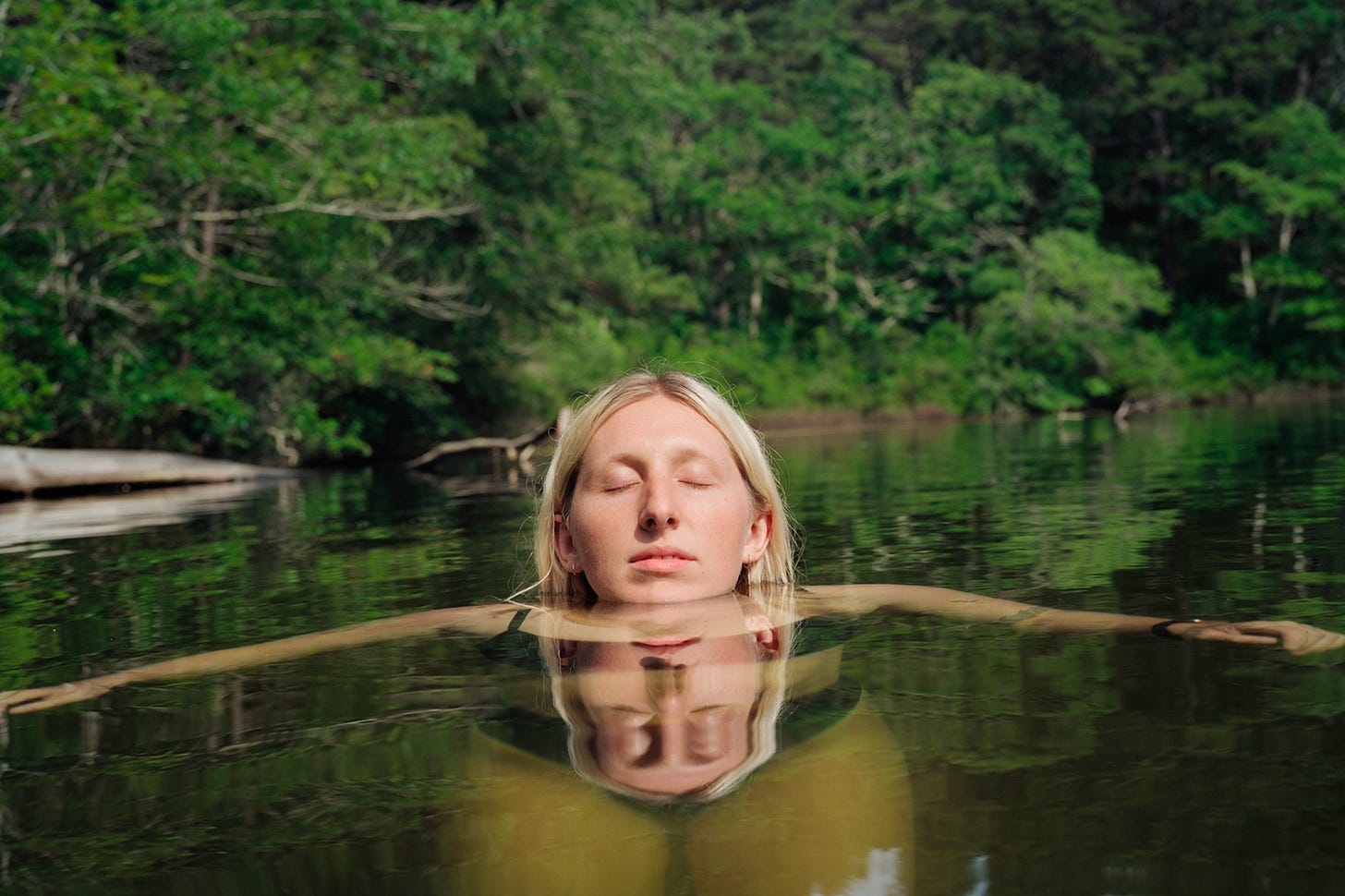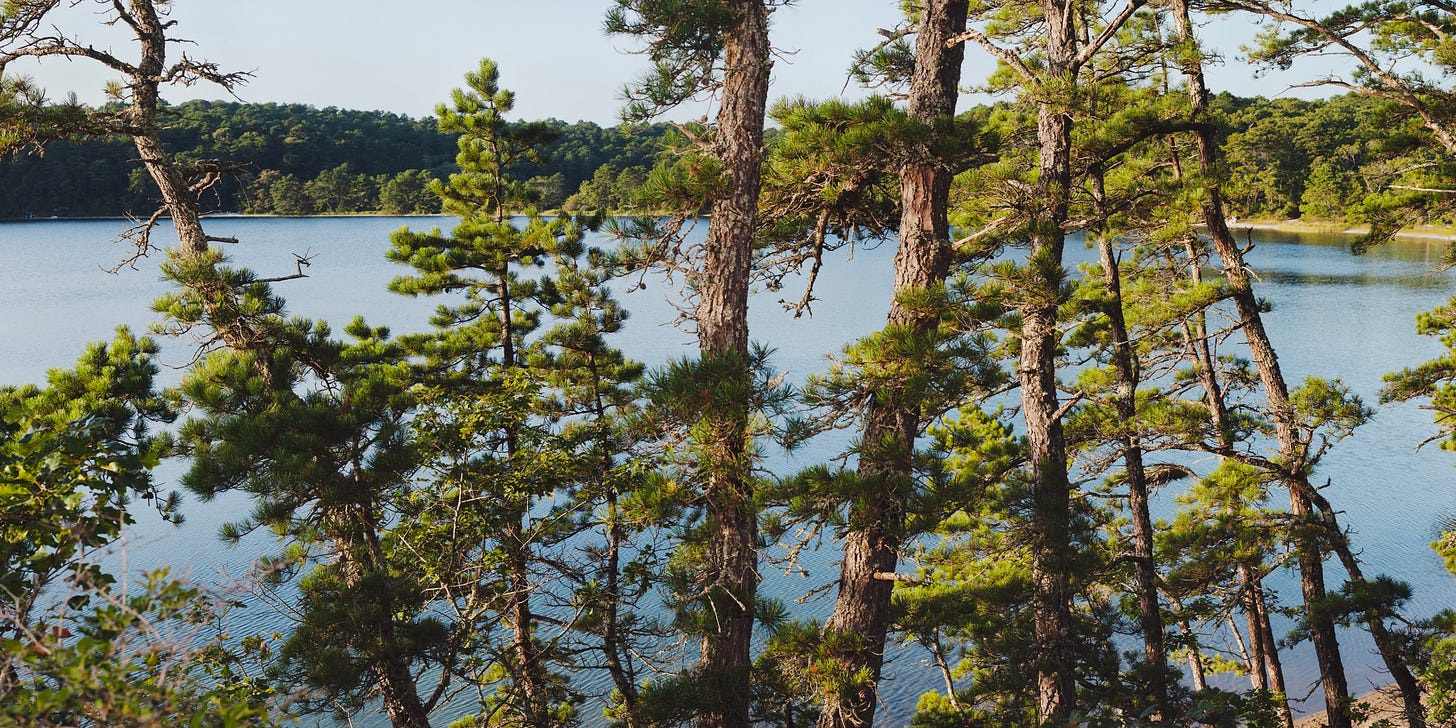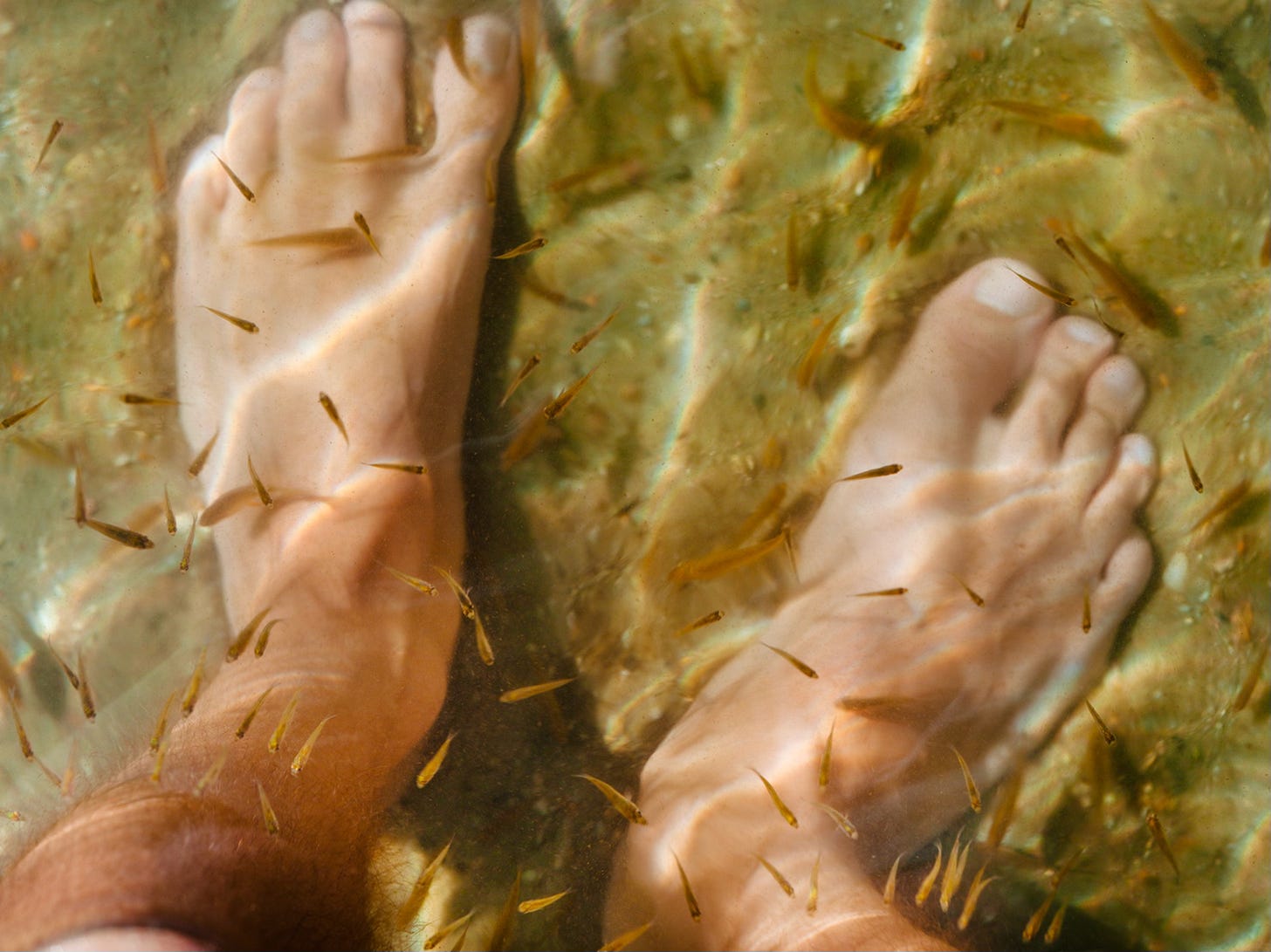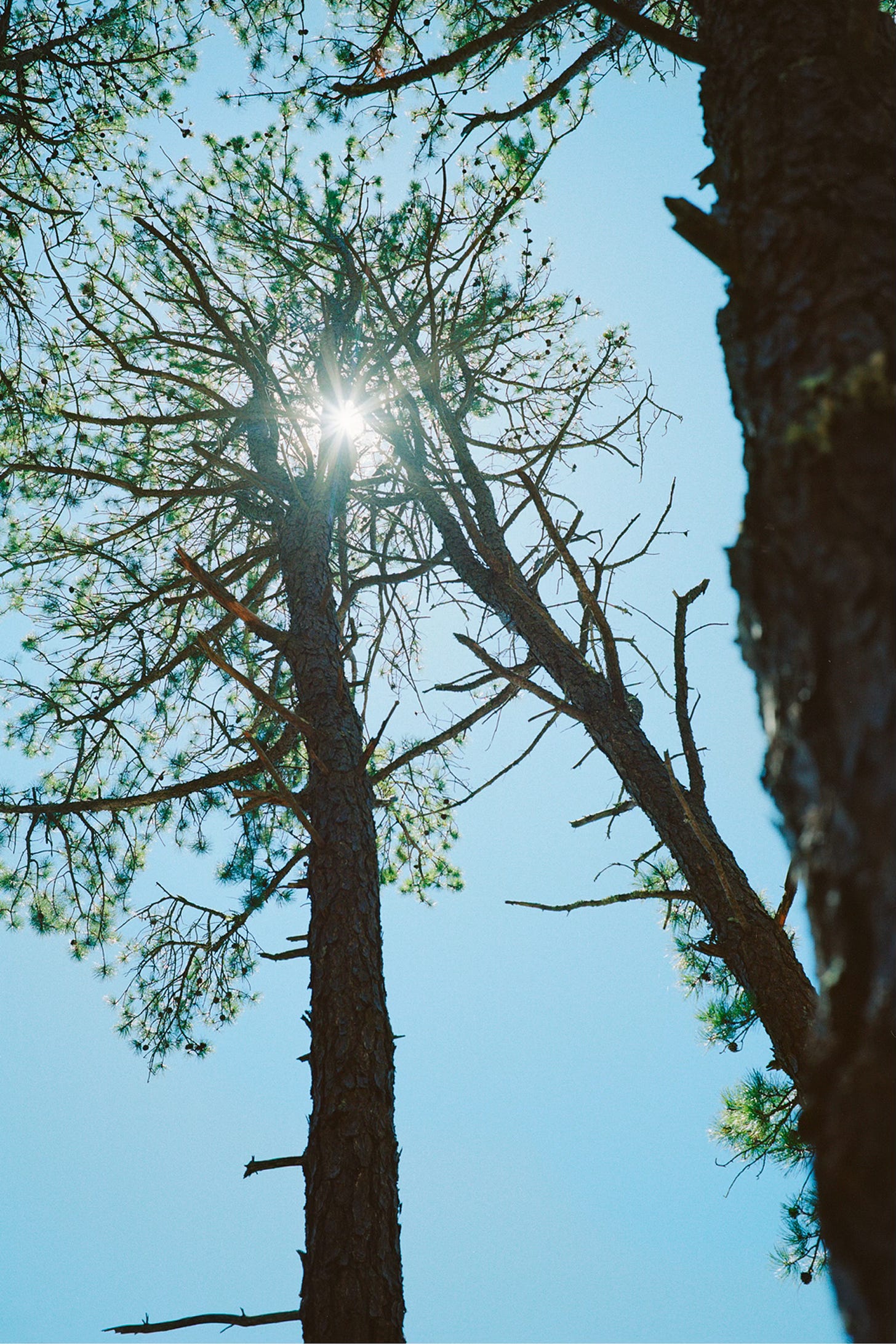Words: Rachel Hahn
Photographs: Kenyon Anderson
Legend has it that Cape Cod rose from the sea. Historian Henry C. Kittredge wrote about it in his 1930 historical account of the Cape, calling the land a “Cytherea of sand and scrub pine” that “washed into being by the whim of tides and currents.” The contours of the Cape shift every year. New sandbars form, old ones disappear, slabs of the beachfront get washed away, and strong winds pile more and more sand atop the sloping dunes. If the Cape’s beaches are in constant flux, the hundreds of kettle ponds that dot the region are a testament to the landscape’s resilience — idyllic havens for swimmers looking to escape the whims of the ocean.
How kettle ponds form is quite simple: At the end of the Ice Age, blocks of ice broke off from massive glaciers and lodged themselves deep in the dirt, leaving behind a large depression — a kettle — filled in by rainwater or the runoff of natural springs. Scientists can chart the evolution of the surrounding area by looking at what’s collected deep beneath each pond’s sun-dappled surface: trapped pollen, sediment, and the remains of sea creatures and other organisms. They’re a record of the atmospheric pollution and shifting climate patterns that mark the early days of the Cape in the Holocene.
The geographical history of these ponds debunked the old myth that Kittredge wrote about. Around 25,000 years ago, the last continental ice sheet started to drift away from present-day Cape Cod. This shift marked the beginning of a drawn out movement that profoundly shaped much of the area’s contemporary landscape. Within the next 5,000 years, that last glacier had floated away from the peninsula as it slowly moved north to the Gulf of Maine. In its wake, rock debris covered the Cape’s bedrock, sloping hills formed from holes in the ice and collapsed in on themselves, and cool waters filled the newly formed kettle ponds that flecked the coastal landscape.
Though the pond’s waters might feel bracingly fresh, they’re a haven for the wildlife in the area. The Cape’s kettle ponds are hatching spots for herring, shorebirds, otters, turtles, and other amphibians. Stake out a spot along the curved periphery and you might see a young osprey nested on the shore learning to fish, or a snapping turtle settling into the sand to lay her eggs in late spring.
The tranquil ponds have long captivated artists, architects, and intellectuals. Painters and photographers including Philip-Lorca diCorcia, Edward Hopper, Henri Cartier-Bresson, and Nan Goldin have all sought to capture these serene ponds in their own distinct practices. Between the 1930s and ’50s, European modernists such Marcel Breuer and Serge Chermayeff put down roots in Wellfleet for the summers, constructing modern homes along the contours of the pond’s banks, nestled in the Cape’s relatively untouched pine-oak forests.
Over the years, the ponds’ banks have dramatically eroded due to changes in weather patterns and an unsustainable influx of visitors. The ponds are respites for the birds, fish, and amphibians seeking shelter from the rougher rhythms of the ocean, but human activity has put their sanctuary in danger. Deforestation has increased nutrient runoff, which leads to increased pollution, pH levels, algal blooms, and other water quality issues. The depletion of the ozone layer has increased the pond’s levels of UV radiation, leaving the health of phytoplankton, algae, and aquatic plants in the balance. The ponds are so appealing because of their size — small, cool hideaways from hot days and unforgiving tides — but this only heightens their sensitivity to environmental factors, making them some of the most delicate ecosystems on the Cape.
In Walden, Henry Thoreau describes the Cape’s kettle ponds as the “earth’s eye.” As you float in the middle of one, with the dark abyss below you and the trees shading the shoreline above, it’s easy to understand why. Once you fully submerge, the horizon line becomes disrupted. The pond is your new center. As your buoyancy adjusts to the freshwater’s gentle ebbs and flows, you’re momentarily pulled towards the pond’s eye, face-to-face with its dark center. Light bounces off the pond’s mirrored surface and dances with the shadows of the tree branches. It’s easy to get lost bobbing on the surface, but we can’t lose sight of the historical record contained in their deepest layers — a humbling reminder of our small place within these ponds’ long histories and our role in preserving the peat, silt, and plant matter that lies beneath.
Words: Rachel Hahn
Photographs: Kenyon Anderson
Originally published in Issue 001, 2024 of Cape Cod Compass










